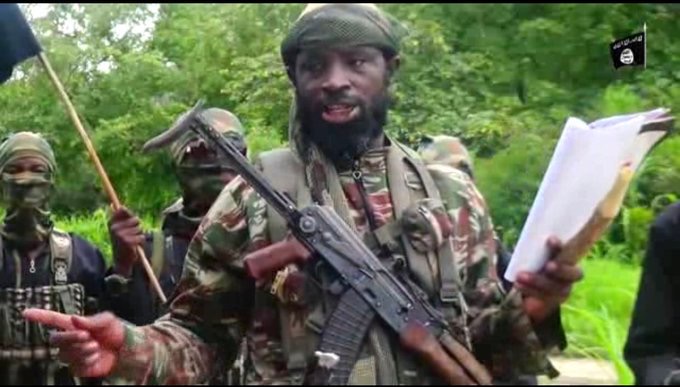ISIS Won’t Get $7m Bounty Placed On Shekau, Says US
 US State Department has said Islamic State in West Africa Province (ISWAP) will not get the $7 million bounty it placed on Abubakar Shekau, leader of Boko Haram sect.
US State Department has said Islamic State in West Africa Province (ISWAP) will not get the $7 million bounty it placed on Abubakar Shekau, leader of Boko Haram sect.
US made this known via a tweet by its State Department Rewards for Justice Program while responding to the reported death of Shekau.
Read Also: Boko Haram Leader, Abubakar Shekau Reportedly Dead As ISWAP Fighters Invade Sambisa Forest
It stated;
News reports today indicate that Boko Haram terrorist Abubakar Shekau blew himself up in a confrontation with ISIS affiliates. Hey, ISIS guys. To clarify: no – you are not eligible for the reward for information on his identity or location. That’s not how the program works.
For more info on the reward: https://t.co/YQUvBieMd2 https://t.co/TiuAZ3CCDt
— Rewards for Justice (@RFJ_USA) May 20, 2021
There had been reports that the Boko Haram leader Shekau was seriously wounded after trying to kill himself to avoid being captured during clashes with rival Islamic State-allied fighters. There are also reports that Shekau is dead.
However, Nigerian Army said that it was probing the reports indicating that Boko Haram leader, Abubakar Shekau was “badly injured” or “dead”.
Read Also: Nigeria Army Declares Abubakar Shekau, 85 Others Wanted For Terrorism
On June 21, 2012, the U.S. Department of State designated Shekau a Specially Designated Global Terrorist under Executive Order 13224.
One year later, a $7 million bounty was placed on him.
The statement issued when a bounty was placed on Shekau reads;
Abubakar Shekau is the leader of Jama’atu Ahl as-Sunnah il-Da’awati wal-Jihad, more commonly known as Boko Haram. Boko Haram, which means “Western education is forbidden,” is a Nigeria-based terrorist organization that seeks to overthrow the current Nigerian government and replace it with a regime based on Islamic law.
The group has existed in various forms since the late 1990s. There are reported communications, training, and weapons links between Boko Haram, al-Qaida in the Lands of the Islamic Maghreb (AQIM), al-Shabaab, and al-Qaida in the Arabian Peninsula, which may strengthen Boko Haram’s capacity to conduct terrorist attacks.
Read Also: Boko Haram: Abubakar Shekau Is On The Run; Disguises As Woman In Hijab – Army
It added;
Shekau was previously the group’s second-in-command. In July 2010, Shekau publicly claimed leadership of Boko Haram and threatened to attack Western interests in Nigeria. Later that month, Shekau issued a second statement expressing solidarity with al-Qaida and threatening the United States. Under Shekau’s leadership, Boko Haram’s operational capabilities have grown.
The group set off its first vehicle-borne improvised explosive device (IED) in June 2011, and has increasingly utilized IEDs in attacks against soft targets. Boko Haram’s August 26, 2011 vehicle-bomb attack on the United Nations headquarters in Abuja, Nigeria marked the group’s first lethal operation against Western interests. At least 23 people were killed, and 80 more were injured, in the attack.
On May 1, 2012, less than one week after the group bombed a Nigerian newspaper building in Abuja, Boko Haram issued a video statement threatening more attacks on local and international news outlets, including the Voice of America and Sahara Reporters, a New York-based media service.
Read Also: Boko Haram Leader Abubakar Shekau Critically Sick
The statement added;
Under Shekau’s leadership Boko Haram has continually targeted young children. On April 14, 2014, Boko Haram kidnapped close to 300 girls from their school in northern Nigeria. In a video message released three weeks later, Shekau claimed responsibility for the kidnappings, calling the girls slaves and threatening to sell them in the market.
Shekau had been the leader of Boko Haram since 2009 following the death of the group’s founder, Mohammed Yusuf. He had been rumoured to have been killed at least four times between July 2009 and August 2015.
Read Also: Boko Haram Leader Abubakar Shekau Reappears After Health Questions
In August 2016, Nigerian Air Force claimed he had been “fatally wounded” by military bombardments, but the terror group released a video only a month later showing he was alive and in good health.
